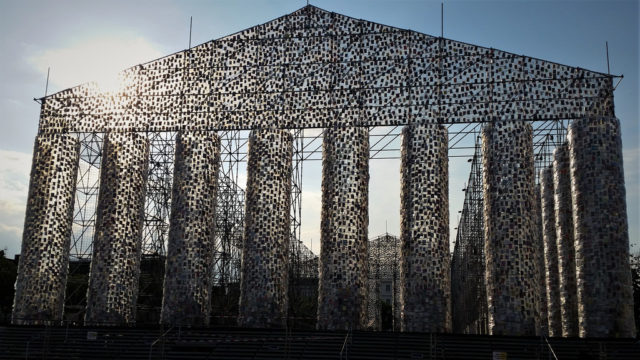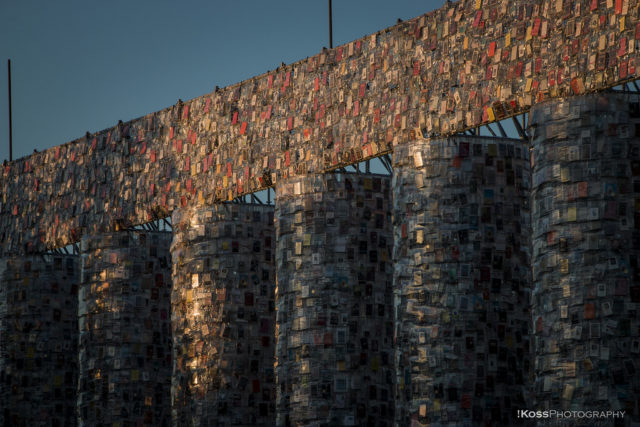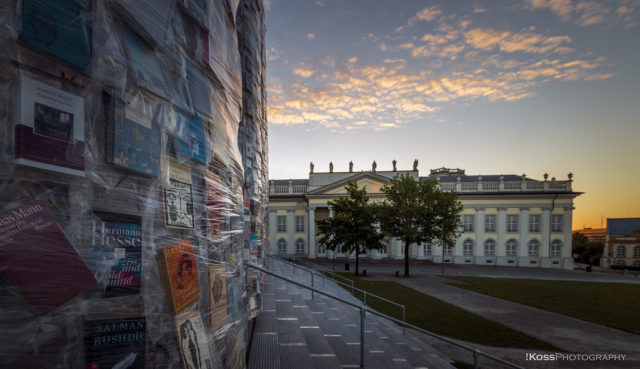Throughout history, certain books have been subjected to censorship, with certain dictators and ideologies promoting book burning. Authorities fear that the ideas that some books can give to people jeopardize their positions of power and prosperity. In addition to the political reasons, books are also condemned over religious, moral, and occasionally even commercial motives.
There are not many monuments raised to remind us of literary censorship. There is, though, the Bebelplatz Night of Shame Monument in Berlin by Micha Ullman, which is a reminder of the terrifying book burning at Bebelplatz in 1933. This activity, conducted by the Nazis, is notorious as a premonition: where they destroy books, they are certain to destroy people. Not even a decade later, the premonition had materialized in the Holocaust, the biggest genocide of the 20th century.

As of June 2017, the world is able to enjoy the work of a 74-year-old South American artist named Marta Minujin, who created an astonishing replica of the Greek Parthenon. Her art installation sits at a spot in the German city of Kassel, where 2,000 books were once burned by the Nazis as part of the Action against the Un-German Spirit—predominantly books by Jewish and Marxist writers. This installation reaffirms that the written word has perpetually been the subject of censorship against free speech, an issue that persists today.

Known as “The Parthenon of Books,” the installation is the centerpiece of the 2017 edition of the German art festival Documenta 14. The Parthenon is made of 100,000 copies of banned books, and Minujín worked with students from Kassel University to make it happen. With the students, she has identified a list of 170 banned books from anywhere around the world. She has further sought the help of the public, asking everyone who has a copy of any banned book to bring a volume and add it to the installation.

One of the books is Mark Twain’s The Adventures of Tom Sawyer, which back in the day was banned when librarians found Sawyer to be a “questionable” moral character. As Twain once noted, though, “whenever you find yourself on the side of the majority, it is time to pause and reflect.“

Salman Rushdie’s The Satanic Verses is another prominent title on the list. It’s a book that has been condemned by Muslims as a major controversy. Rushdie was accused of blasphemy and mocking the Muslim faith. In Rushdie’s words, though, “what is freedom of expression? Without the freedom to offend, it ceases to exist.”

Khaled Hosseini’s The Kite Runner and Gossip Girl by Cecily von Ziegesar are two more titles that found their place in the majestic Parthenon of Books. Each copy of a banned book that was collected or donated for the installation can be seen carefully wrapped in a protective plastic bag, and is hung from the structure. By placing the corpus of censored material on a replica of the Parthenon, a structure that in its essence embodies a symbol of democracy, the Argentinian artist asks the spectator to consider the role of politics in its attempt to influence the thought.

For Minujín, it’s not the first installation of this type as she first realized such piece back in 1983. Back then, she erected a temple of books in a square in Buenos Aires, using 25,000 books that were banned by Argentina’s military junta, in a city that is well remembered for producing the best librarian the world has ever known: Jorge Luis Borges.

The latest reincarnation of the project in Germany has been under construction since October 2016, and it was officially opened in June 2017. As the frame of the Parthenon was raised, volunteers have largely helped position the books onto the metal grills. As it is a high-rise installation, cranes were used to adjust the tallest sections of it.
Read another story from us: Use vintage books to construct useful and decorative items for the home
Nevertheless, the Parthenon of Books, just like literature itself, is a continual work in progress, and visitors are most welcome to check the list of banned books and bring along a copy, if available, to be featured in the installation. The piece will be on display until September 2017. Until then, it is estimated that a million people will pay a visit to the Parthenon of Books.
